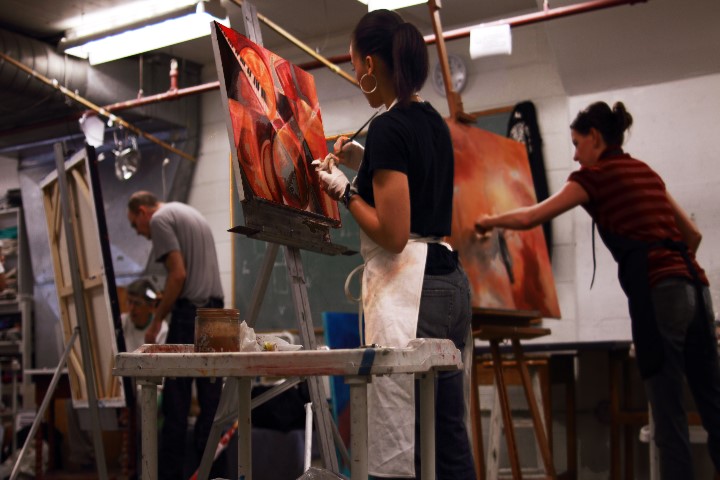Students attending the Cincinnati Arts and Technology Studios are getting a second chance at graduating high school, along with lessons about character many are carrying with them to college.


Students attending the Cincinnati Arts and Technology Studios are getting a second chance at graduating high school, along with lessons about character many are carrying with them to college.
Aislynn Bell told the Cincinnati Business Courier she came to CATS for education and training services, but later discovered the program offered much more than practical skills.
“I needed guidance and I needed some discipline and I needed a path to follow,” she said. “It gave me a goal. It gave me something to shoot for.”
CATS isn’t technically a high school, but rather a “credit recovery program” for teens at risk of not graduating on time.
“We’re using the visual arts to reconnect disenfranchised students,” said CATS CEO Clara Martin, a former Cincinnati Public Schools teacher. “The public high school can definitely provide the core curriculum, but if they need that elective credit in fine arts, they can come here to get that at off times.”
According to the Business Courier:
ATS’ mission is to give urban teens from across the region a chance to become productive citizens by providing arts education as motivation to stay in school, graduate and advance to higher learning. It offers five studio courses in tandem with character building, and through its Bridging the Gap program, it offers education and training services to graduates. These services provide a chance to change their lives when unemployment is a reality.
Bell, a 2014 graduate who followed CATS’ digital multimedia track, also used the Bridging the Gap program to become a patient care assistant at Cincinnati Children’s Hospital. She said CATS offered a different experience that allowed students to own their work, while helping them to improve it.
“My favorite thing about it is they don’t tell you how to edit your picture; they teach you how to edit how you want to do it,” she said.
Researchers at the Institute for Advanced Studies in Culture commend programs of this type that use visual and fine arts. By their very nature these disciplines engage the more holistic right-brain phenomena. Rather than demanding or encouraging right and wrong answers, this participation in the arts takes the student’s own voice seriously. This is something that is often in short supply in the worlds in which they have been raised. This sense of ownership and voice strengthens their sense of agency. With agency comes hope that they can overcome their circumstances.
And while strengthening agency, they are also infusing the art with content specific virtues. These exercises are more than “pedagogies of permission,” that simply foster the unconstrained individual will. For more on the danger of “pedagogies of permission,” see The Tragedy of Moral Education in America.
CATS infuses art and technology lessons with a focus on character virtues like citizenship, perseverance, accountability, and the importance of higher education, while an ancillary Bridging the Gap component offers students training on everything from interviewing skills and email etiquette to certification training for nursing, manufacturing, construction, financial and other professions.
As the CATS program celebrates 15 years in downtown Cincinnati, many graduates returned to speak with current students about how the program changed their perspective on life.
“I feel like having the time and the ability to share my experience with these kids will give them a different outlook and a different way to see the program as a whole,” Ellen Pierce, a 23-year-old who went through the Bridging the Gap program, told students. “This could really lead to life-changing events.”
Pierce said she turned to CATS when she needed credit to graduate from Clark Montessori High School in 2012. Her success in the program gave her the confidence to become a State Tested Nursing Assistant through Bridging the Gap, and to earn a double-major at the University of Cincinnati. She now works two jobs, one at the Lindner Center of HOPE and another at the Cincinnati Children’s Hospital.
“If I didn’t get the credit, I wouldn’t have graduated on time,” she said. “That most definitely would have killed my self-esteem and my drive to keep going with life. If I wasn’t going to take the (State Tested Nursing Assistant) class to be certified, I probably wouldn’t have worked at Children’s.”
Educators and education leaders who are interested in the type of strategies used in the CATS program in Cleveland can learn more by going to
For further reading on CultureFeed